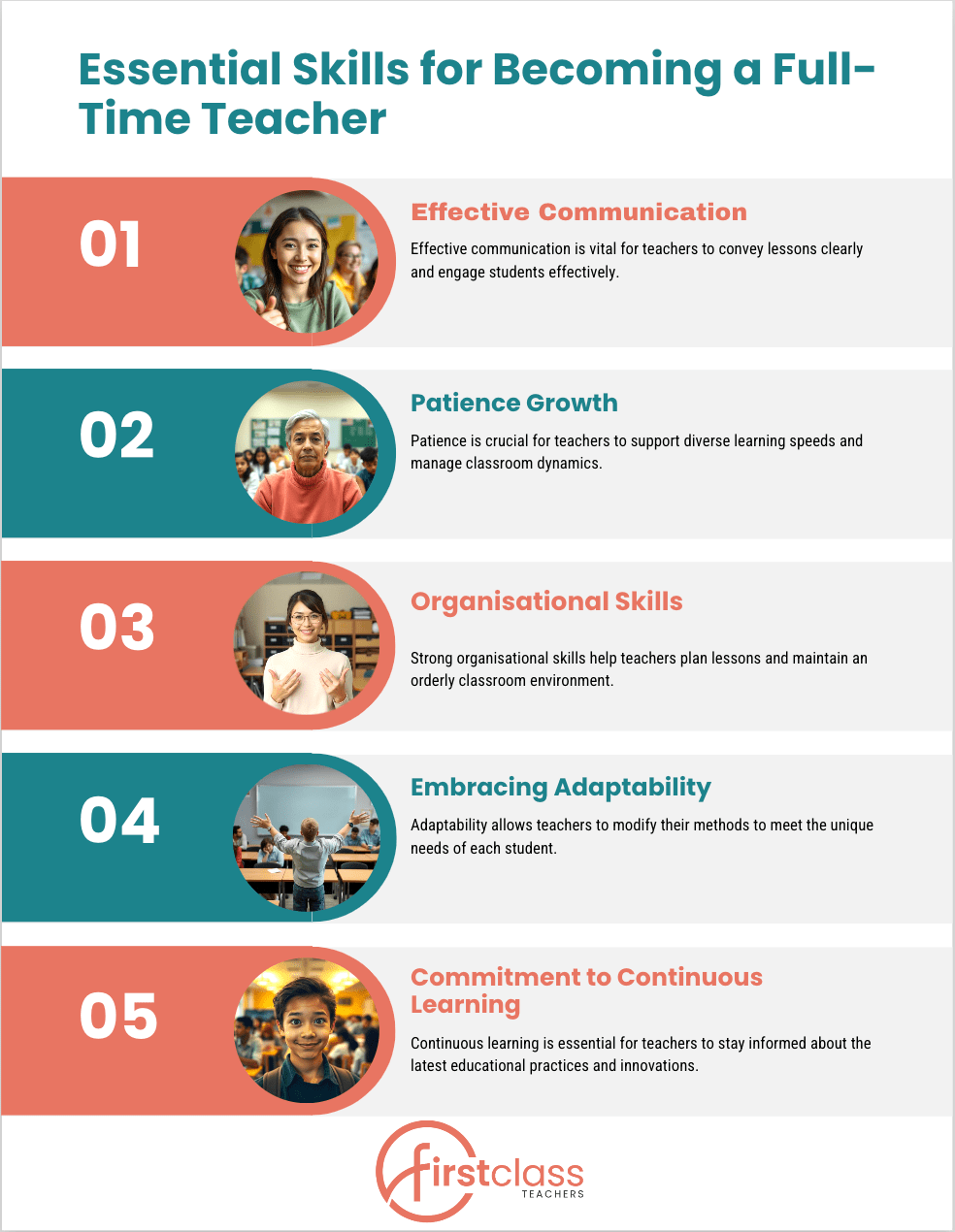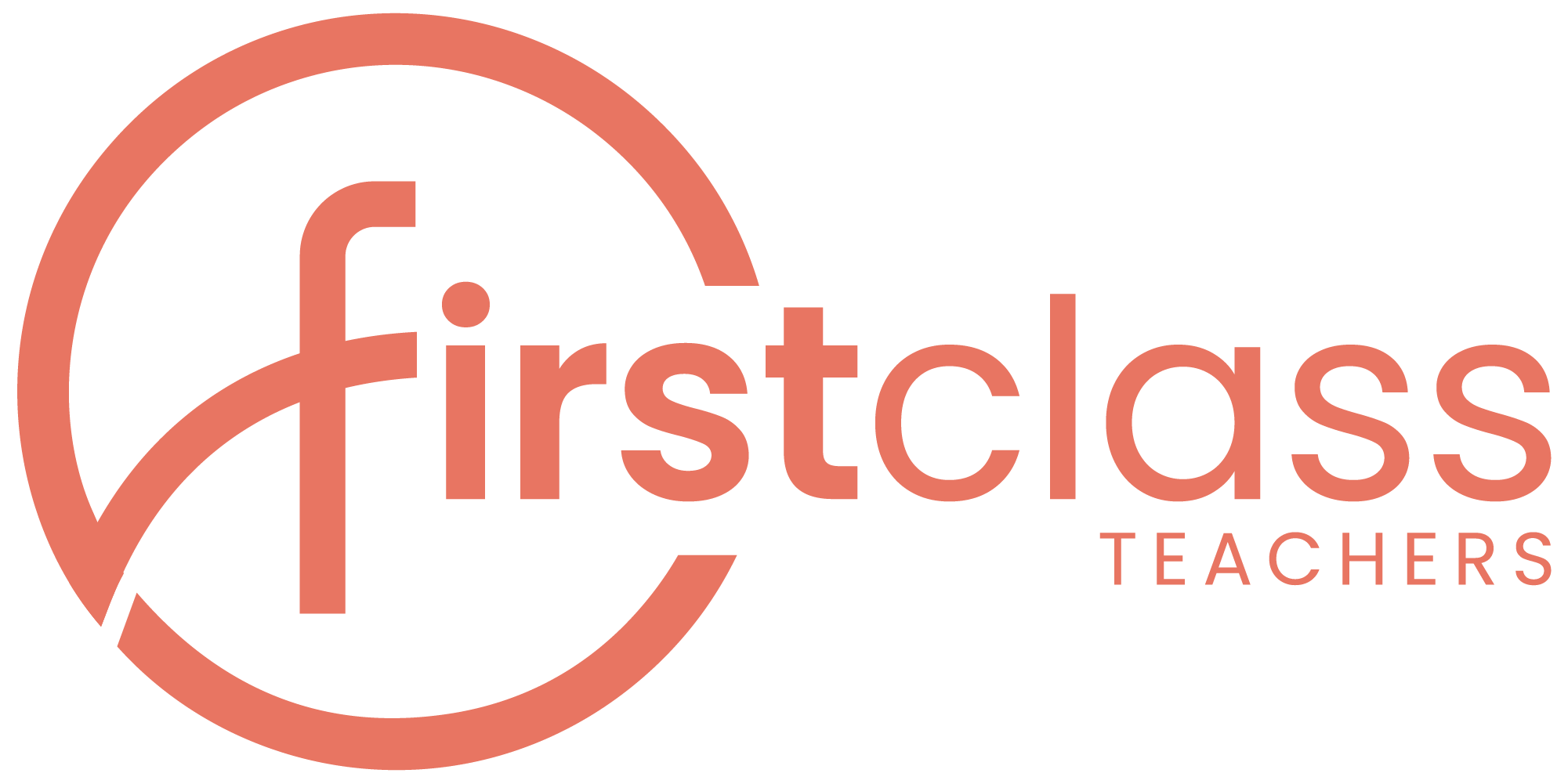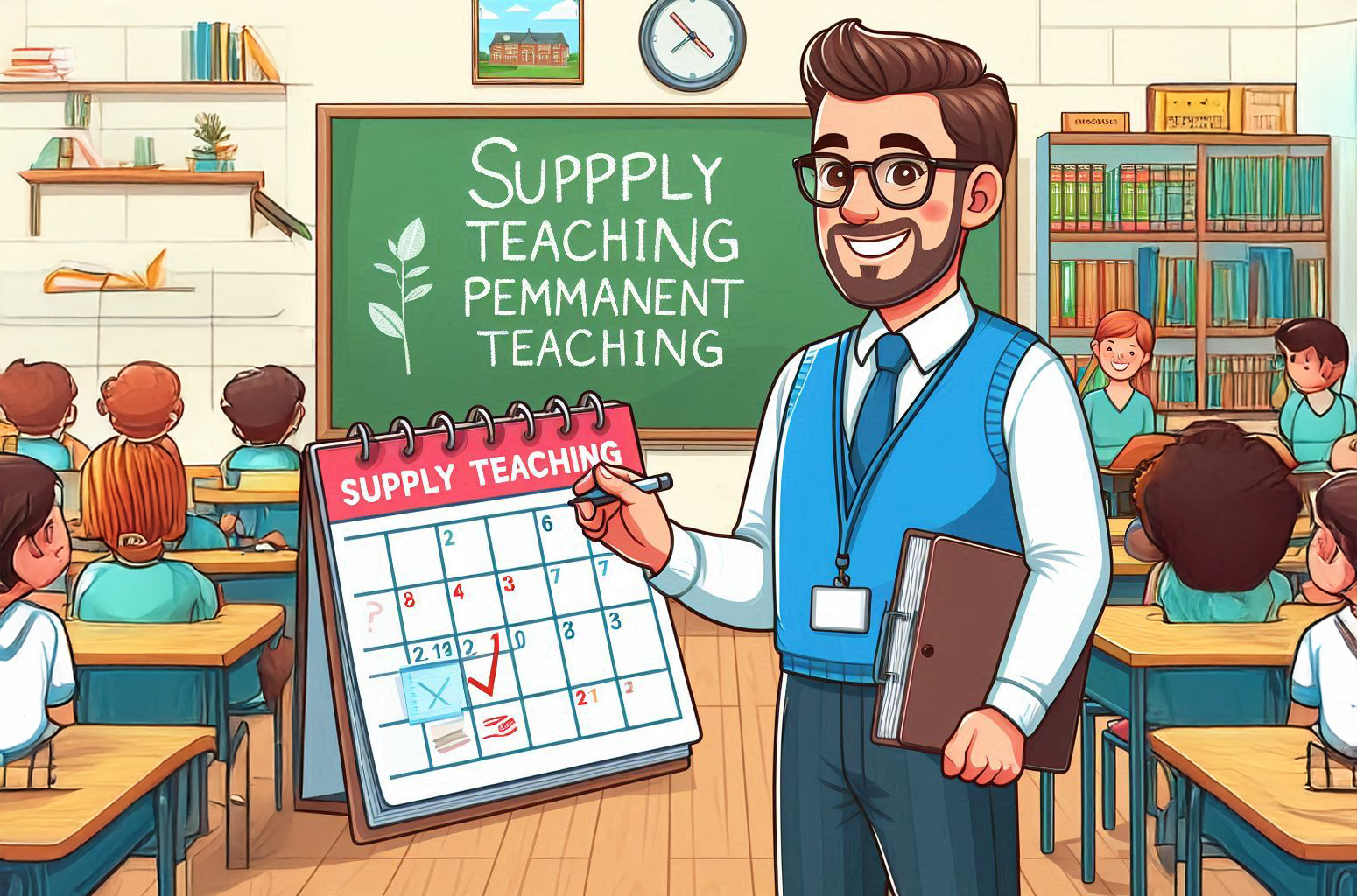So, you’re thinking about making the big jump from supply to permanent teacher, huh? Expect a whole new world of opportunities! You’ll be stepping into a job with greater stability, with the chance to really dive into education. No more bouncing around different schools—you’ll get to know your students and build strong relationships. This transition is all about moving to a permanent teacher role where you can really make an impact. Plus, you’ll have a solid contract and more security in your career. It’s exciting to think about joining a team and collaborating with colleagues in your department! With vacancies in Sheffield and near you all the time, 2025 might just be the perfect time to take that leap.
As a new teacher, you’ll face some new challenges and learning opportunities that will keep you on your toes. Unlike your previous supply teaching position, you’ll be expected to provide a consistent learning experience for your students, which is both a responsibility and a privilege. It’s all about building trust with your colleagues and students and really settling into your teaching role. You might even find yourself excited about the variety in your day-to-day tasks! Just remember to keep things practical and stay focused on your students’ learning journey. Who knows? Maybe working as a supply teacher was just the start of something amazing!

Transitioning from Supply Teaching to a Permanent Role: A Comprehensive Guide
How to Begin the Transition from Supply Teaching to Permanent Roles
Transitioning from supply teaching to a permanent teaching role is an exciting journey that requires a strategic approach. First, make sure to spend time in different schools, allowing you to understand their unique community needs and the type of school you want to teach in. This is a critical activity that helps you grow your professional connections and build a greater sense of belonging.
As you engage with staff and explore secondary roles, remember that recruitment for permanent positions is at an all-time high due to a shortage of teachers. Take advantage of this long-term growth opportunity by working closely with an expert team of consultants who can offer insights into the latest recruitment trends.
It’s essential to carefully consider your next steps and ensure you access the right resources. By positioning yourself effectively, you’ll have the chance to build a superior teaching role from a supply basis, ultimately leading to the job security and stability you desire in your professional life.

What Steps Should You Take to Move from Supply to Permanent Teaching?
Moving from supply teaching to a permanent teaching position can be a rewarding experience. Begin by evaluating your current experience and identifying the specific skills you can leverage to strengthen your application. The notable distinctions between these positions will require considerable effort on your part, but keep in mind that it’s a marathon, not a sprint, and the rewards will come.
Concentrate on establishing connections within your current supply teaching position, your school community by participating in meetings and interacting with colleagues. The stability of a permanent role often offers a more consistent routine compared to agency work, enabling you to flourish in a term that aligns with your goals. As time goes on, your dedication will significantly benefit both your students and your career.
How Can You Prepare for a Permanent Teaching Position?
Preparing for a permanent teaching position after moving to a permanent teaching role from a supply teaching background can be a stark transition. Whether it’s September, January or mid-way through the year, understanding the nature of the hiring process is essential.
You will need to build relationships with staff and students, as this will be key in securing a long-term position. If it’s at a school you’ve not taught at yet, getting a visit booked in is essential in starting off on the right foot! The teaching environment can be unpredictable, but with a lot of preparation and adaptability, you can navigate the long haul of securing your place in a permanent teaching role.
What Resources Are Available for Supply Teachers Seeking Permanent Roles?

For supply teachers seeking permanent roles, a variety of resources can enhance their job search and increase their chances of success. One of the most effective avenues is engaging with recruitment agencies, which specialise in matching teachers with schools looking for permanent staff. Agencies such as First Class Teachers have track records of finding exclusive job opportunities and job openings as well as providing valuable advice on the application process.
Online job boards are another essential tool, allowing supply teachers to browse listings from multiple schools and districts in one place. Platforms like these often feature filters to help refine searches based on location, subject area, and job type.
Additionally, networking directly with the school can yield opportunities not always advertised. Building relationships with school administrators and expressing interest in permanent positions can be advantageous whilst in your supply teaching role. Finally, attending job fairs offers a chance to meet potential employers face-to-face, making a memorable impression while exploring various teaching openings.
What Are the Challenges of Moving from Supply Teaching to a Permanent Position?
Transitioning from supply teaching to a permanent position presents several challenges that can significantly impact a teacher’s career. One key challenge is the level of adaptability required; supply teachers often adjust to different classrooms and student dynamics, whereas a permanent role demands a deeper commitment to a single environment. This shift can be daunting, as it requires developing long-term relationships with students and staff. Additionally, schools often look to recruit teachers with extensive experience in a specific subject or curriculum, making it challenging for supply teachers to compete against candidates who have established themselves in a particular setting.
Moreover, the emotional investment in a permanent position is significant. Supply teachers may find it difficult to transition from a more flexible role, where they can maintain a certain detachment, to one that requires full engagement in the school’s culture and community. Balancing the desire for job security with the need to adapt to a more structured environment can create pressure, making the move from supply teaching to a permanent role a complex journey.
What Common Obstacles Do Supply Teachers Face When Transitioning?
Transitioning into a supply teaching role presents several common obstacles that educators must navigate. One significant challenge is adapting to different classroom environments, as each school may have distinct cultures and procedures that require quick adjustments. Furthermore, supply teachers often face the issue of establishing authority rapidly, given that they typically have limited time to build rapport with students. Additionally, the lack of consistent curriculum familiarity can hinder their ability to deliver lessons effectively, leading to feelings of uncertainty.

How Can You Overcome Challenges in the Transition Process?
To overcome these challenges, supply teachers can employ several strategies. First, embracing a growth mindset is crucial. By preparing to adapt their teaching style to accommodate different classroom environments and student needs, educators can create a more seamless transition into each new role. Building a toolkit of effective classroom management techniques—such as establishing clear expectations from the outset and using positive reinforcement—can help supply teachers with the ability to assert their authority and gain students’ respect quickly.
In terms of curriculum familiarity, supply teachers can benefit from collaborating with regular staff before their assignments or utilising resources provided by the school, such as lesson plans or instructional materials. Engaging in professional development opportunities
focused on adaptive teaching methods can also enhance their ability to deliver lessons effectively across diverse subjects and grade levels.
Moreover, maintaining open communication with students is essential. By fostering an inclusive atmosphere where students feel comfortable sharing their thoughts and concerns, supply teachers can build rapport more rapidly. Taking the time to learn students’ names and interests can further strengthen these connections, making classroom management smoother.
To combat emotional fatigue, self-care practices and setting realistic expectations are vital. Supply teachers should prioritise their well-being by recognising when they need breaks or time to recharge. Engaging in reflective practices, such as journaling about their experiences or seeking feedback from colleagues, can also provide valuable insights and support their professional growth.
Ultimately, while transitioning into a supply teaching role can be challenging, with the right strategies and mindset, educators can turn these obstacles into opportunities for personal and professional development. By embracing the unpredictability of supply teaching, they can enhance their skills and adapt to diverse educational environments, ultimately enriching their teaching practice.

What Skills Are Crucial for a Successful Transition?
Successful transitions, whether in personal or professional contexts, require a blend of essential skills. First and foremost, adaptability is crucial; the ability to pivot in response to new challenges can make a significant difference. Being open to change allows individuals to embrace new situations and learn from them.
Additionally, effective communication skills are vital, as they facilitate the sharing of ideas and collaboration with others. Clear communication can help in setting expectations and resolving conflicts, making transitions smoother.
Moreover, strong problem-solving abilities enable individuals to tackle unforeseen issues that may arise during transitions. Being resourceful and innovative can lead to creative solutions that enhance the overall process.
Lastly, possessing a solid foundation in time management ensures that tasks are prioritised and completed efficiently, minimising stress and keeping the transition on track.
What Should You Know About Permanent Teaching Roles?
When considering a permanent teaching role, it’s essential to understand the commitment involved. Permanent positions often require a high level of consistency in teaching practices, ensuring that students receive a stable and reliable learning environment. This means that teachers must be dedicated to their students’ progress and success over the long term.
Furthermore, engaging in ongoing training and development is vital for maintaining teaching effectiveness. New strategies and educational tools emerge regularly, and teachers must adapt to these changes to enhance their skills and methodologies. This commitment to professional growth is often supported through structured programs within the institution.
Additionally, CPD (Continuing Professional Development) opportunities are crucial for teachers in permanent roles. These programs not only help educators stay updated with the latest teaching practices but also foster a sense of professional community and collaboration among staff, ultimately benefiting the entire learning environment.
What Are the Benefits of Securing a Permanent Teaching Role?
Securing a permanent teaching role offers numerous advantages that can significantly enhance both personal and professional development. Firstly, it provides a sense of job stability, allowing educators to focus on their teaching without the anxiety of job insecurity. This stability fosters a more consistent learning environment for students, as teachers can build lasting relationships and engage in long-term planning.
Additionally, permanent positions often come with improved benefits packages, including health insurance, retirement plans, and professional development opportunities. These benefits not only support teachers’ well-being but also encourage ongoing growth in their careers. Unlike many Supply Teaching Agencies, First Class Teachers’ also provide pensions and CPD training for their staff. Furthermore, having a permanent role can lead to greater career advancement opportunities within the educational institution, enabling teachers to take on leadership roles or specialised positions that align with their passions. Overall, securing a permanent teaching role is a significant step toward a fulfilling and impactful career in education.

How to Assess if a Permanent Position Is Right for You?
Assessing if a permanent position is right for you involves several key considerations. First, evaluate your career goals and aspirations. Does the role align with where you see yourself in the future? Consider the school’s culture as well; a supportive and inclusive environment can significantly impact your job satisfaction and performance.
Next, think about the work-life balance offered by the position. Does it allow you the flexibility to maintain personal commitments? Additionally, analyse the benefits and compensation package. Are the salary and perks competitive? This can heavily influence your overall happiness in the role.
Finally, reflect on your situation. Are you ready to commit to a permanent position, or might you prefer the freedom of supply teaching? Taking the time to assess these factors will help ensure you make an informed decision about your career path.








